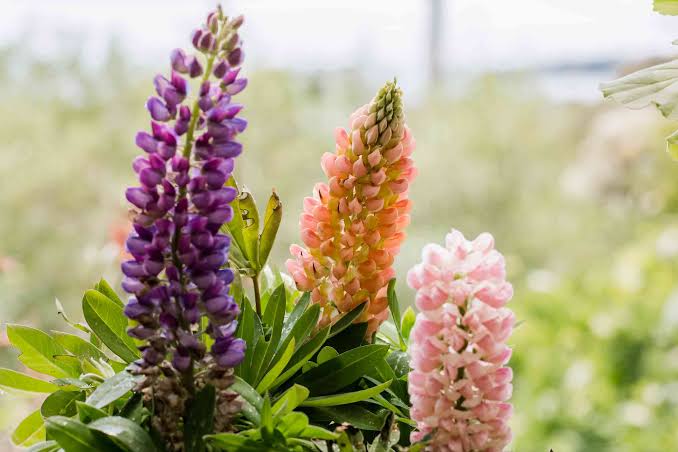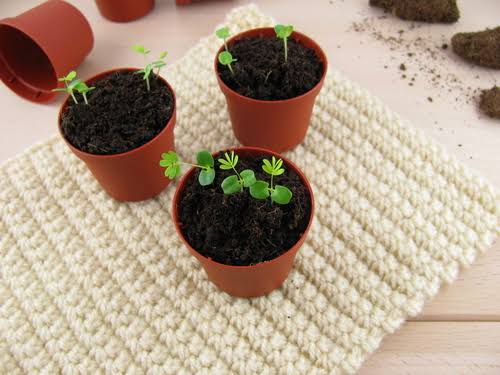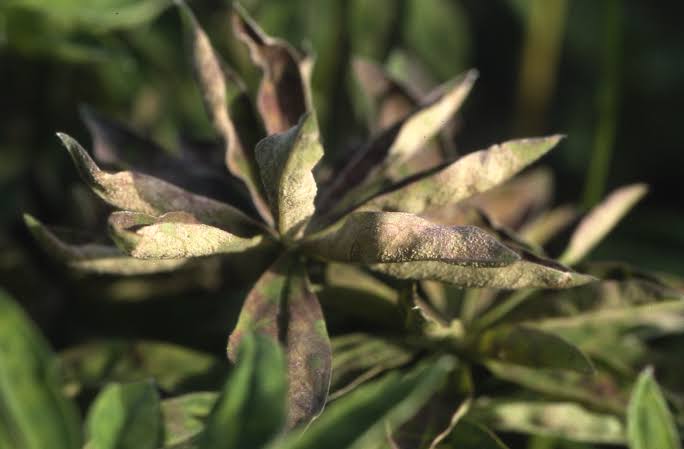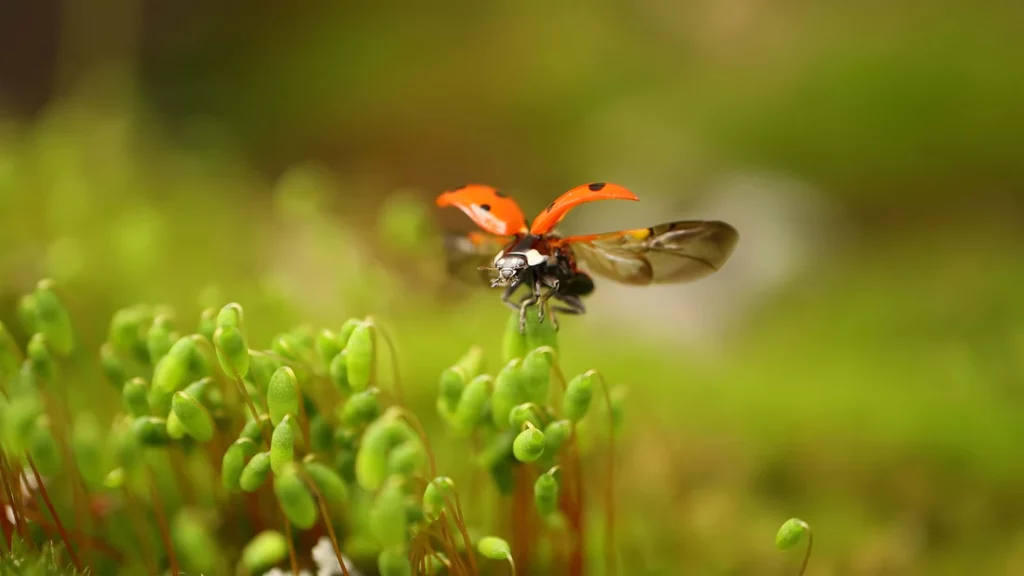Table of Contents
Have you ever felt awestruck by the sight of tall, colourful spires reaching up toward the sky? Perhaps the beautiful Lupins enchanted you. Lupins, also referred to as Lupus in science, are among the more than 200 species of the legume family. Their gorgeous flowers that bloom from spring to summer make them one of the favourites among many gardeners.
Currently, Lupins are available in a range of hues, ranging from the purest whites and softest pinks to the deepest purples and brightest yellows. Lupins are the epitome of beauty and utility in the world of gardening. They attract beneficial wildlife, beautify your garden with their vivid colours, and even contribute to better soil quality.
So, if you are interested in growing these multipurpose plants, stick to the end, as we’ll provide complete information on how to grow and care for these wonderful plants.
Understanding Lupin Plants

About the Lupin Plants
Lupins, members of the legume family, are appealing due to their lovely foliage and tall spikes of colourful flowers. Depending on the species and the growing conditions, these plants can reach heights of up to 5 feet. The distinctive beauty of Lupins is accentuated by their leaves, which seem like an extended hand with fingers. The five to 28 leaflets make up each leaf spread out like a fan, adding texture to your garden.
Varieties of Lupins
As mentioned earlier, the genus Lupinus contains more than 200 different species. The ‘Russell Hybrids’ are the most well-known variety of Lupin. These hybrids are great for a typical cottage garden because of their tall, sturdy growth and wide range of brilliant colours.
Another popular species is ‘Garden Lupin‘, known for its large leaves. They are commonly used in flower beds and wildflower fields. The ‘Mini Gallery’ variety is ideal if you have short walls and just want a subtle aesthetic feel. The ‘West country’ series of Lupins are preferred by gardeners as they have been bred to be resistant to diseases. Apart from the mentioned varieties, one can also check out other varieties such as Masterpiece and Manhattan Lights.
How to Grow Lupins Plants

Ideal Conditions for Planting Lupins
Lupins are hardy and adaptable plants that may thrive in many environments, but there are several things you should keep in mind to ensure the best possible growth. Lupines require a minimum of six hours of daily sunlight and do not do well in partial shade. It requires slightly acidic to neutral pH soil with good drainage. Plants with such deep taproots do best in rich, well-draining soil that allows their roots to stretch out and flourish.
Planting lupins in your yard is a good idea, even if you live in a colder area, because they can withstand frost. They also benefit from the reduced risk of fungal illnesses that result from adequate ventilation. When deciding where to plant your lupins, keep in mind that certain types can reach heights of several meters.
Step-By-Step Guide on Planting Lupins from Seeds
Direct sowing lupin seeds outside is an option, but for the best results, begin the process indoors 6-8 weeks before the last spring frost is forecasted.
- Step 1: Lupin seeds have a tough shell. Therefore, it’s best to soak them first. Soaking the seeds in warm water for 24 hours prior to planting will help them germinate more quickly.
- Step 2: The seeds should be planted in a seed-starting mix that allows excess water to drain away from the roots. The seeds should be planted about an eighth of an inch deep, and the soil mixture should be lightly pressed over them.
- Step 3: To take care of seedling’s growth, always make sure the soil is damp but not soggy. Seeds need to be started off in a warm environment with indirect sunshine.
- Step 4: The germination period for lupin seeds is from two weeks to a month. A seedling is ready to be planted in the garden once it has developed its second pair of genuine leaves.
Grow Lupins through Cuttings
Cuttings should be taken in the spring or early summer from a robust parent plant.
- Step 1: Using the plant’s fresh growth, cut a portion measuring between four and six inches long. At least two or three sets of leaves should be included in the cutting.
- Step 2: Cut off the lower leaves, soak the snipped end in rooting hormone, and then plant the cutting in a pot with peat moss and perlite.
- Step 3: The cutting should be watered and placed in indirect sunlight. Water regularly, but don’t let the soil become soggy.
- Step 4: Developing roots usually takes a few weeks. The cutting can be moved to a larger container or the garden once it has established a strong root system.
Tips for Transplanting Lupins
Below are a few tips listed for transplanting lupins:
- Time your lupin transplants such that you are sure that there are no chances of frost. Make sure that during the time of transplant, seedlings have a minimum of two complete sets of leaves.
- Soil should be amended with compost or well-rotted manure before planting.
- Before you plant your seedling, make sure the hole you’re using is twice as wide and deep as the root ball you pulled from the pot. Plant the lupin seedling at the same depth it has been growing in the pot. Gently compact the soil around the root ball as you fill the hole back in.
- When caring for transplants, it’s important to water them properly after planting and to keep watering them periodically, especially during dry periods. Mulching the soil around your plants is a great way to prevent water loss and keep unwanted plants at bay.
- Keep in mind that once lupines have taken hold in an area, they are not easily uprooted because of their extensive taproot system. So, be selective about where you put your plants. A lovely and hardy addition to any garden, lupinsrequire only a little care to flourish.
How to Care for Lupins

1. Light and Temperature Requirements
The Lupins are very much adaptable and can thrive in low, medium, or high light. However, they prefer locations with a combination of sun and shade. To maximize development and flowering, these plants need at least six hours of sunlight daily.
Lupins are a type of plant that does well in colder climes. Although young plants and seedlings may benefit from being protected from frost, they are frost-tolerant and can survive temperatures well below freezing. They benefit from some afternoon shade in the summer to avoid overexposure to the sun.
2. Watering Requirements
In dry weather, Lupins notably benefit from regular watering. However, overwatering can cause root rot, a typical problem in Lupins, so be careful. Although the soil should be maintained damp, good drainage is essential. To protect plants from fungal diseases, water them thoroughly, focusing on the roots rather than the foliage.
It is preferable to underwater than overwater Lupins because they are somewhat drought-tolerant once established. A general rule of thumb for watering plants throughout the growing season is once or twice each week.
3. Soil and Fertilization Needs
The ideal soil pH for lupins is somewhere between 5.5 and 7.0. They do well in organically rich, well-drained, and loose soil. Root issues can be prevented by avoiding soils with excessive clay or standing water.
Lupins are legumes, which means they have the potential to fix atmospheric nitrogen in the soil. Because of this, they are classified as low-feeders. However, growth and flowering can be encouraged by using a small dose of a balanced, slow-release fertilizer in the spring.
To improve nutrient availability, you can make Soil amendments by adding compost or well-rotted manure during planting time. Mulching regularly can also help retain moisture, reduce weed growth, and replenish soil nutrients.
4. Trimming and Pruning
Lupins should be pruned in late winter or early spring before they begin to develop again actively. Pruning is the practice of removing diseased or otherwise unproductive branches from a plant by cutting them off at ground level. If you want to make clean cuts and stop the spread of illness, you need to use clean, sharp pruning shears. Take caution when pruning so new growth isn’t harmed.
5. Deadheading
Lupins require regular deadheading or the removal of faded blossoms. More flowers will be produced throughout the season, and the plant’s energy will not be wasted on producing seeds. Once all the blooms on a lupin spike have faded, you can deadhead them by cutting the spike just below the lowest bloom. Ensure continual blooming by deadheading regularly throughout the season.
Common Problems and Solutions When Growing Lupins

1. Powdery Mildew
The leaves and stems of plants infected with powdery Mildew appear to have a white or grey powder coating. Humidity and a lack of ventilation are common causes. Parts that are infected with powdery mildew should be cut off and thrown away. If you notice fungus on your plants, try increasing the ventilation around them and maybe even using a fungicide.
2. Root Rot
Overwatering or inadequate drainage is usually to blame for this disease. Plants that have been infected may wilt, become yellow, and die. Avoid overwatering and plant your lupins in a location with good drainage to prevent root rot. Root rot is a serious problem that can spread to healthy plants very quickly.
3. Inadequate Flowering
If lupines aren’t getting enough water or sunlight, they won’t be able to produce many flowers. You should give your plants at least six hours of sunlight per day and use a balanced fertilizer in the spring.
4. Yellow leaves
Overwatering and poor drainage can cause leaf yellowing. Reduce watering as necessary to keep the soil around your lupins from becoming soggy. It is important to till the soil frequently and add manure for optimum moisture and growth of the plant.
Natural Solutions to Control Pest

1. Aphids
In the case of Lupins, aphids can be a big issue, as they are a type of insect pest that feeds on the sap of plants. They leave behind a sticky residue known as Honeydew, which can promote the growth of sooty mould, hampering the growth of your plant. Aphids can be discouraged using a spray made of water and a drop or two of dish soap. Natural insecticides are worth considering for serious infestations.
2. Slugs and Snails
Natural deterrents like crushed eggshells or diatomaceous earth can be sprinkled around plant bases to keep pests away. Beer traps can be set to lure and drown the pests.
Summing It Up.
Tending to the crop of lupins is a satisfying and rewarding activity for any gardener. The brilliant colours and dramatic flower spikes of these alluring plants make them a welcome addition to any garden. The best part is that they also serve an important ecological function by attracting pollinators and improving the quality of the soil.
In this guide, we’ve covered everything from lupin identification to the best soil to planting procedures to a discussion of how to multiply your crop. Their demands for light, temperature, water, and fertilizer have been covered as well. Common issues and their remedies, as well as trimming and upkeep methods, have all been discussed.
Feel free to plant some lupins in your garden and bask in the glow of happiness and contentment they will provide. Happy gardening!





